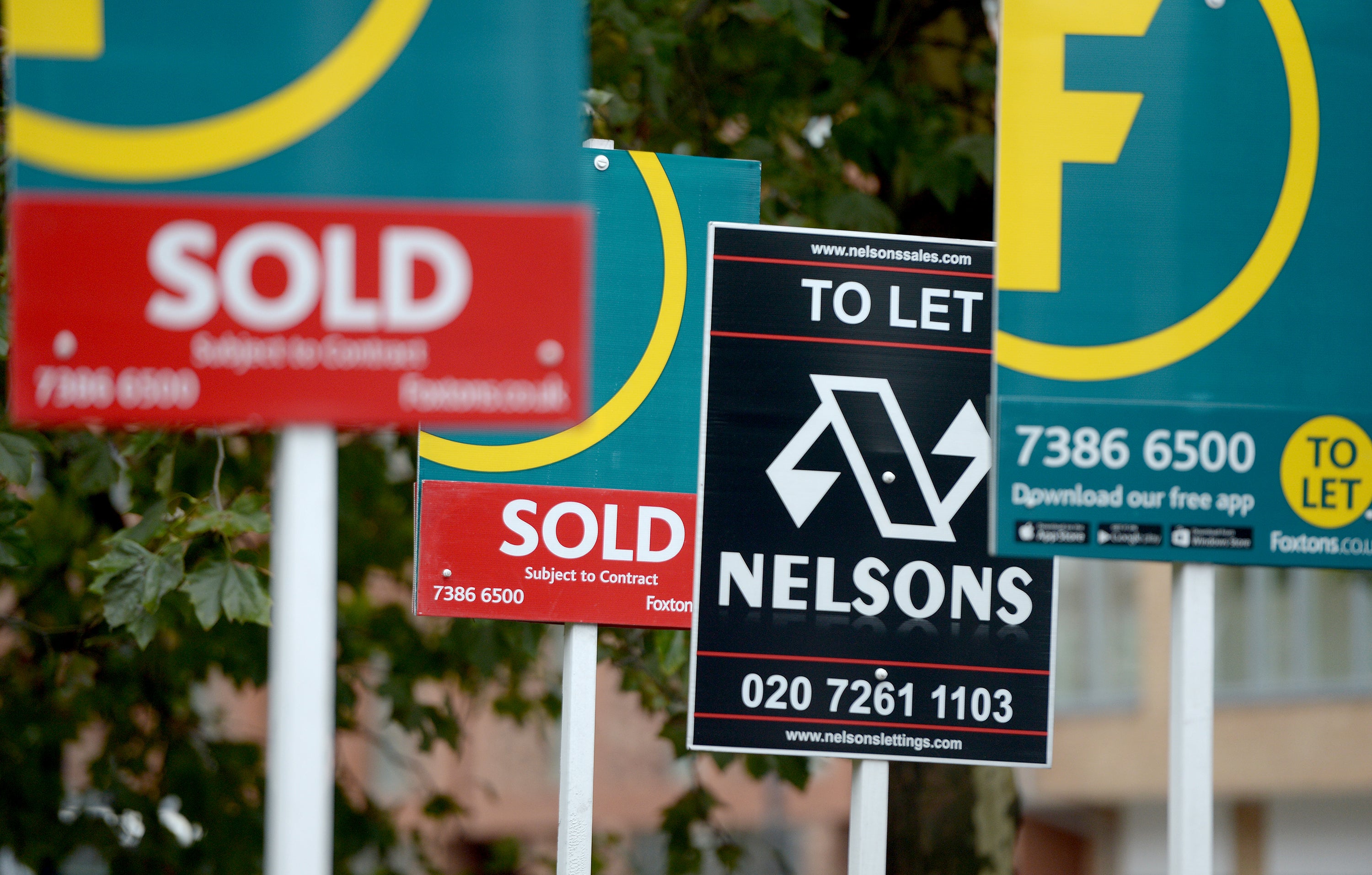May house sales down around 5% on a year earlier
The figures could be a sign of the impact of rising mortgage rates and living costs on the housing market, according to some experts.

Your support helps us to tell the story
From reproductive rights to climate change to Big Tech, The Independent is on the ground when the story is developing. Whether it's investigating the financials of Elon Musk's pro-Trump PAC or producing our latest documentary, 'The A Word', which shines a light on the American women fighting for reproductive rights, we know how important it is to parse out the facts from the messaging.
At such a critical moment in US history, we need reporters on the ground. Your donation allows us to keep sending journalists to speak to both sides of the story.
The Independent is trusted by Americans across the entire political spectrum. And unlike many other quality news outlets, we choose not to lock Americans out of our reporting and analysis with paywalls. We believe quality journalism should be available to everyone, paid for by those who can afford it.
Your support makes all the difference.Around 5% fewer house sales took place in May this year than in the same month in 2021, according to HM Revenue and Customs (HMRC) figures.
Some experts said it could be a sign of the impact of rising mortgage rates and living costs on the housing market.
Across the UK, 109,210 homes changed hands last month, marking a 5.1% fall compared with May 2021.
However, the total did edge up by 1.3% compared with April 2022.
The total for May this year is also up compared with the 96,500 house sales recorded in the same month in 2019, before the coronavirus pandemic.
House prices have continued to hit a string of record highs in recent months.
Interest rates have also been gradually increasing, pushing up the cost of new mortgage deals and existing home loans on variable rates.
As we approach the midpoint of the year, the peaks of the market are levelling out, especially as we begin to see the impact of rising mortgage rates and living costs on the housing market
Nick Leeming, chairman of estate agent Jackson-Stops, said: “Whilst higher interest rates are likely to rein in housing demand, more supply is needed to even out the scales and keep transactions buoyant.
“This is not just in the form of new-build properties but also encouraging the sale of under-occupied houses by supporting downsizers and the rising costs of moving.”
Anna Clare Harper, director of real estate technology platform IMMO, said: “Last year’s temporary stamp duty reduction encouraged homeowners to upgrade and aspiring homeowners to get on the housing ladder. This boosted transactions substantially.”
She said that while the pace of house price growth often outweighed the stamp duty savings that could be made last year, “this was not a barrier due to widely available, cheap mortgage finance, which funds property acquisitions but not transaction taxes”.
Kevin Webb, managing director, Legal & General Surveying Services, said: “As we approach the midpoint of the year, the peaks of the market are levelling out, especially as we begin to see the impact of rising mortgage rates and living costs on the housing market.
“Of course, while this may have slightly dented enthusiasm in the market, activity certainly hasn’t run out of steam.”
Jeremy Leaf, a north London estate agent and a former residential chairman of the Royal Institution of Chartered Surveyors (Rics), said: “Transactions, which are probably a better measure of market health than more volatile prices, are often the last to reflect change.
“The protracted period between the date a sale is agreed and completion means we can wait several months to notice something is up.
“Previous falls in sale numbers could partly have been blamed on shortage of stock, but we are now finding, at the sharp end, a softening in demand prompted principally by the rise in inflation, as well as uncertainty as to when it will end.”
Chris Hutchinson, chief executive of rental platform Canopy, said: “With inflation showing no signs of easing, mortgages will continue to get further out of reach and push those with dreams of homeownership out of the market.”